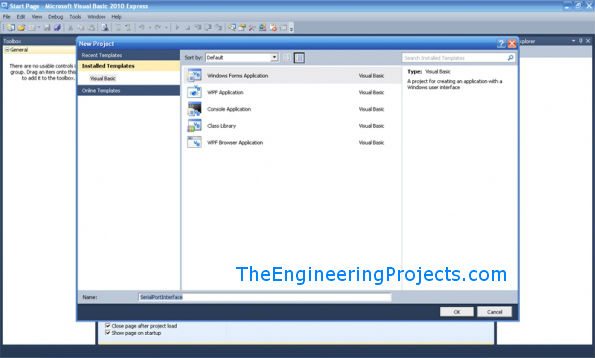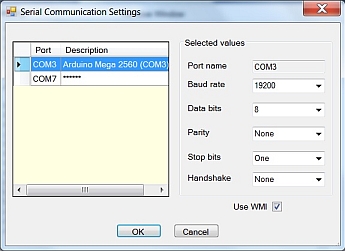Serial Communication Visual C 2010
I've been googling and researching for hours how to get my console Visual C Express program to transmit simple ASCII data to serial port. And without any success. MSDN library doesn't help me as the is unusable. I think it's for Express 2008.
This post is part of the Practical C programming tutorial for Bioloid. Here you can find a post serie about using serial port communications with C/C and C#, for Windows, Linux and microcontrollers. This code is for Windows and Visual Studio and can be used for serial cable communications, USB2Dynamixel and indeed Zigbee. May 15, 2015 This video tutorial shows how we can access the Serial Port on our computer using Visual Studio C# Windows Forms Application. We can use this to establish serial communication between devices such. Apr 16, 2014 excel 2010 vba send and receive from com1. How to: Send Strings to Serial Ports in Visual Basic. Step by step example found in this article, this may help you a lot: Serial Port Communication in Excel (VBA) We are trying to better understand customer views on social support experience, so your participation in this interview project would.
Can Serial Communication
Everything else I've found is too old or just so complicated that I can't understand a word. All I want to do is set up my serial port settings (COM3 57600 8-N-2, no handshake) and send few strings through serial port. How hard can it be?
Code is only slighty modified from DarkTimes's excellent tutorial.
A 24lb Pizza 15-Sep-15 12:01 15-Sep-15 12:01 Hello, I know this is an old article, but I am hoping I will be able to get some help with this matter as it doesn't necessarily relate directly to the serial communication. I am fairly new to c so this is perhaps actually a really silly problem. I am creating a windows console application that asks the user for the desired baud rate, parity, etc. Then it will open the serial port and begin communicating. My problem is that I want get all the parameters and verify them one at a time, then use CSerial::Setup. Now all my user inputs are of the format std::string and I want to convert them to formats that are useful for this serial class. My thought was that I could somehow create variables of the same type.
Example: EBaudrate ebaudrate = CSerial::EBaud19200 or something along those lines where the type is EBaudrate. If anyone could help me that would be great, thank you for your time, Mitch - Extra information - Compiler: Visual Studio 2010 Express Library in question: CSerial. Member 10290644 22-Jul-15 19:36 22-Jul-15 19:36 Hi, The MFC flavor compiles and works nicely with MSVC 6.0. However i recently tried to recompile it using MSVC in VS2015, and i get the following errors: C2440 'type cast': cannot convert from 'void(thiscall CWnd::.) (WPARAM,LPARAM)' invalid type conversion I did a bit of digging and it seems MSVC 2015 won't allow parameters to be passed in the message map whereas version 6.0 allowed it. But looks like the MFC implementation of this serial class MUST pass a parameter particularly if multiple serial ports are used. What should i do?
Visual Communication Basics
Member 11246861 6-Dec-14 8:23 6-Dec-14 8:23 I've downloaded your demo and compiled it in my VC 2013 Ultimate. I had to add only #define WINVER 0x0502 in your StdAfx.h and to add the linker option FORCE:MULTIPLE.
C Serial Port Communication


All projects are built. I'm testing HelloWorld.cpp with my lent microcontroller plugged to the USB of my laptop.
HelloWorld runs without errors and Rx LED of the microcontroller goes ON for a moment. I think it's a success.
I'll write more, perhaps tomorrow. I don't need any replies.
Thanks again. Michael Stammberger 21-Jan-14 2:47 21-Jan-14 2:47 If you have problems to use the CSerial class with a virtual com port (VCOM): Did you already examine the behaviour of the VCOM port concerning the settings of the DTR (and RTS) signals? As stated in section 'Virtual COM Ports.' : 'Receiving spurious events is another problem, which is quite common when using virtual COM ports.' I had to communicate with a device using the (w/o handshaking) and was very confused about receiving the event EEventSend instead of the expected EEventRecv - even if EEventSend was masked out.
The expected EEventRecv never arrived! On the other hand the communication worked well with other programs which don't use CSerial, but also using overlapped-io, nonblocking communication. By analysing the communication with Sysinternals tool and comparing the differencies between the not working CSerial based program and the working program it came to light: The virtual COM port requires the DTR signal to be set to high - even if there is no handshaking used at all! After changing the DTR to high the communication was working.

No more spurious events anymore. Problem solved! (I don't understand at all, why a wrong DTR signal leads to spurious events, but anyways.) There are different appraoches to change the DTR settings. Please look into the following thread for more information: As far as I know there is no standard available how the DTR line has to be set by default. But I found some hints saying 'conventionally the DTR is set to high if the port is opened'. So I changed CSerial to do it this way by default.
I hope this information might be helpful for somebody. Best regards Michael. Member 10335754 14-Oct-13 10:17 14-Oct-13 10:17 My reading of this sample code suggests that when using Overlapped IO the calls to ReadFile and WriteFile don't include the same OVERLAPPED structure as is used for the call to WaitEvents. In fact all 3 calls use distinct structures created per call. However, MS documentation asserts 'After opening the file object for asynchronous I/O, an OVERLAPPED structure must be properly created, initialized, and passed into each call to functions such as ReadFile and WriteFile. I don't understand why the two articles seem to differ. What am I trying to do.
I want to write a application that uses a single thread to read from and write to an external device via a COM port (on NT4.0). The messages read and written are not co-ordinated. By that I mean the application may write a message to the COM port 'at the same time' as the external device sends a message to be read. I propose that a separate (2nd) thread in my application will raise an event to inidicate to the 1st (serial) thread when a message is available to send to the device.
Summary of my Question 1. Can I use the Overalapped.cpp example to wait for multiple objects using one event for overlapped IO (as in the example) and another to trigger a message write? Should both calls to Serial::Read and Serial::Write be made without passing in an OVERLAPPED structure?